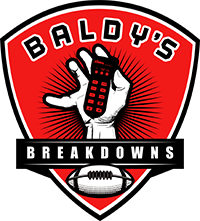
In the high-stakes world of the NFL, team dynamics often serve as the hidden engine driving a franchise’s success or failure. The chemistry among players, the cohesion between coaching staff and athletes, and the underlying culture of the organization can either propel a team to championship glory or doom it to a season of missed opportunities. Join us as we delve into the intricate web of relationships and trust that shape the destiny of NFL teams, revealing the untold stories behind their triumphs and tribulations.
The Role of Leadership
One of the most pivotal elements of team dynamics in the NFL is leadership. Whether embodied in a charismatic team captain or a sage-like head coach, effective leadership is often the nucleus around which team chemistry orbits. For instance, a leader who can rally the troops during critical moments serves as an invaluable asset. Conversely, deficient leadership can lead to fragmented locker rooms and erode trust among teammates, sabotaging a season long before it takes off.
During legendary coach Bill Walsh’s tenure with the San Francisco 49ers, his innovative style and focus on team unity transformed the franchise into a dynasty. The “West Coast Offense” was more than just X’s and O’s on paper; it was a creed that every player bought into. Walsh had an unparalleled ability to see potential in each athlete and mobilize that potential in a way that galvanized the entire team. This is the kind of leadership that births dynasties, illustrating how crucial it is for team dynamics.
You can catch more about leadership impacts in sports on our Facebook page.
The Power of Communication
Communication may sound like an ordinary facet of any teamwork scenario, but in the high-pressure environment of the NFL, it’s an extraordinary necessity. Miscommunication on the field can lead to disastrous turnovers, missed assignments, and ultimately, losses. Conversely, clear and effective dialogue between coaches and players, and among players themselves, can streamline operations and execute game plans to perfection.
Take, for example, Peyton Manning, known for his intricate play-calling and ability to adjust plays at the line of scrimmage. Manning’s capacity to communicate swiftly and effectively with his offensive line and receivers became the cornerstone of his Hall of Fame career. His communication prowess was not just about calling audible plays; it reflected years of practice, preparation, and an innate understanding of his teammates.
Insights into seamless team communication are shared in our updates on X.
The Impact of Player Relationships
The emotional and psychological bonds between players cannot be overstated. Trust and camaraderie can elevate individual performances and team cohesiveness. This isn’t merely about players liking each other; it’s about players feeling confident that their teammates have their backs on and off the field. Such relationships can create an environment where risk-taking is encouraged, and players feel more comfortable making high-stakes plays.
Remember when the Philadelphia Eagles clinched their first Super Bowl win in 2018? That victory was fueled by a squad that fostered deep-seated relationships. From Jason Kelce’s impassioned speeches to the brotherhood mentality displayed by the team, it was clear that these players were more than just co-workers; they were a family, fighting together for a common goal.
Don’t miss more behind-the-scenes looks at NFL team cultures by subscribing to our YouTube Channel.
The Influence of Culture and Environment
A team’s internal culture and overall environment are also quintessential elements that define team dynamics. Positive culture can act as a catalyst for success, while a toxic environment can cause even the most talent-laden teams to underperform. Culture encompasses everything from how setbacks are managed, to the rituals that bind a team together, and how the organization aligns with larger community values.
Consider the New England Patriots under Bill Belichick. The “Patriot Way” emphasizes humility, discipline, and detail-oriented preparation. This cultural ethos has reinvigorated countless players’ careers and maintained a standard of excellence that persistently positions the Patriots as perennial contenders.
Coordinated Physical and Mental Preparedness
The synchronization of both physical training and mental preparedness cannot be ignored when discussing the nuances of team dynamics. NFL teams invest millions in coaching staff, sports psychologists, and cutting-edge technology to ensure their players are in peak condition, both physically and mentally. This is because success on the gridiron isn’t solely dictated by raw talent. It’s about the precise calibration of mind and body, honing a razor-sharp edge for battle.
The Seattle Seahawks under coach Pete Carroll are a prime example. The team’s mantra, “always compete,” isn’t restricted to game day; it permeates every practice, meeting, and weightlifting session. The formula is simple: mind plus muscle equals mastery on the field.
Explore more about physical and mental preparedness on our social media platforms, including Facebook, X, and our YouTube Channel.
Conclusion
Examining the symbiotic relationships of leadership, communication, player relationships, culture, and coordinated physical and mental preparedness showcases how team dynamics are integral to NFL success. The unseen forces of chemistry and cohesion can transform a group of individuals into an unstoppable team. As we continue to witness unforgettable moments on the field, let’s remember that these moments are often the product of intricate and carefully cultivated team dynamics.
For more on key factors influencing NFL teams, keep following us on our social channels.
